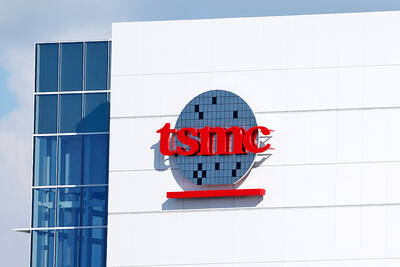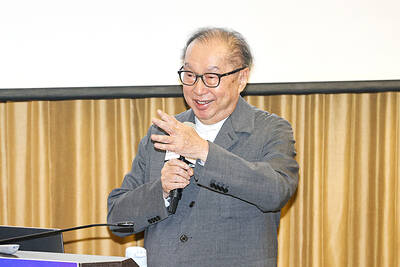Nanya Technology Corp (南亞科技), the nation’s largest computer memory chipmaker, yesterday posted its fifth consecutive month of sales growth as prices bounced back further on continuing pickup in demand from computer makers.
Last month’s sales grew more than threefold to NT$6.05 billion (US$188 million), compared with NT$1.46 billion a year ago, the Taoyuan-based chipmaker said. That also represented the strongest rebound since January 2007, when it made NT$6.52 billion.
That also meant a 7 percent month-on-month increase, the company said.
The chipmaker has planned to hike prices for mainstream computer memory chips, or dynamic random access memory (DRAM), by between 10 percent and 20 percent last month from the month before.
Shipments slid 2 percent last month from October as the company is in a process of migrating technology to next-generation 50-nanometer technology, which would allow Nanya Technology to make chips at 50 percent lower cost.
In the January-November period, Nanya accumulated NT$37.49 billion in revenues, up 7 percent from the same period last year, a company statement said.
Unlike significant progress made by local rival Powerchip Semiconductor Corp (力晶半導體) in returning to monthly profit, Nanya Technology has said it did not expect a turnaround this year as technological upgrades would continue to limit output.
This month the contract price is expected to reverse an uptrend over the past four months on increasing supply, researcher DRAMeXchange Technology Inc (集邦科技) said.
The contract chip price may fall by between 5 percent and 10 percent this month from last month, DRAMeXchange forecast.
Nanya Technology shares dropped 0.23 percent to NT$22 yesterday.

SEASONAL WEAKNESS: The combined revenue of the top 10 foundries fell 5.4%, but rush orders and China’s subsidies partially offset slowing demand Taiwan Semiconductor Manufacturing Co (TSMC, 台積電) further solidified its dominance in the global wafer foundry business in the first quarter of this year, remaining far ahead of its closest rival, Samsung Electronics Co, TrendForce Corp (集邦科技) said yesterday. TSMC posted US$25.52 billion in sales in the January-to-March period, down 5 percent from the previous quarter, but its market share rose from 67.1 percent the previous quarter to 67.6 percent, TrendForce said in a report. While smartphone-related wafer shipments declined in the first quarter due to seasonal factors, solid demand for artificial intelligence (AI) and high-performance computing (HPC) devices and urgent TV-related orders

Taiwan Semiconductor Manufacturing Co (TSMC, 台積電) and the University of Tokyo (UTokyo) yesterday announced the launch of the TSMC-UTokyo Lab to promote advanced semiconductor research, education and talent development. The lab is TSMC’s first laboratory collaboration with a university outside Taiwan, the company said in a statement. The lab would leverage “the extensive knowledge, experience, and creativity” of both institutions, the company said. It is located in the Asano Section of UTokyo’s Hongo, Tokyo, campus and would be managed by UTokyo faculty, guided by directors from UTokyo and TSMC, the company said. TSMC began working with UTokyo in 2019, resulting in 21 research projects,

BYPASSING CHINA TARIFFS: In the first five months of this year, Foxconn sent US$4.4bn of iPhones to the US from India, compared with US$3.7bn in the whole of last year Nearly all the iPhones exported by Foxconn Technology Group (富士康科技集團) from India went to the US between March and last month, customs data showed, far above last year’s average of 50 percent and a clear sign of Apple Inc’s efforts to bypass high US tariffs imposed on China. The numbers, being reported by Reuters for the first time, show that Apple has realigned its India exports to almost exclusively serve the US market, when previously the devices were more widely distributed to nations including the Netherlands and the Czech Republic. During March to last month, Foxconn, known as Hon Hai Precision Industry

Quanta Computer Inc (廣達) chairman Barry Lam (林百里) yesterday expressed a downbeat view about the prospects of humanoid robots, given high manufacturing costs and a lack of target customers. Despite rising demand and high expectations for humanoid robots, high research-and-development costs and uncertain profitability remain major concerns, Lam told reporters following the company’s annual shareholders’ meeting in Taoyuan. “Since it seems a bit unworthy to use such high-cost robots to do household chores, I believe robots designed for specific purposes would be more valuable and present a better business opportunity,” Lam said Instead of investing in humanoid robots, Quanta has opted to invest